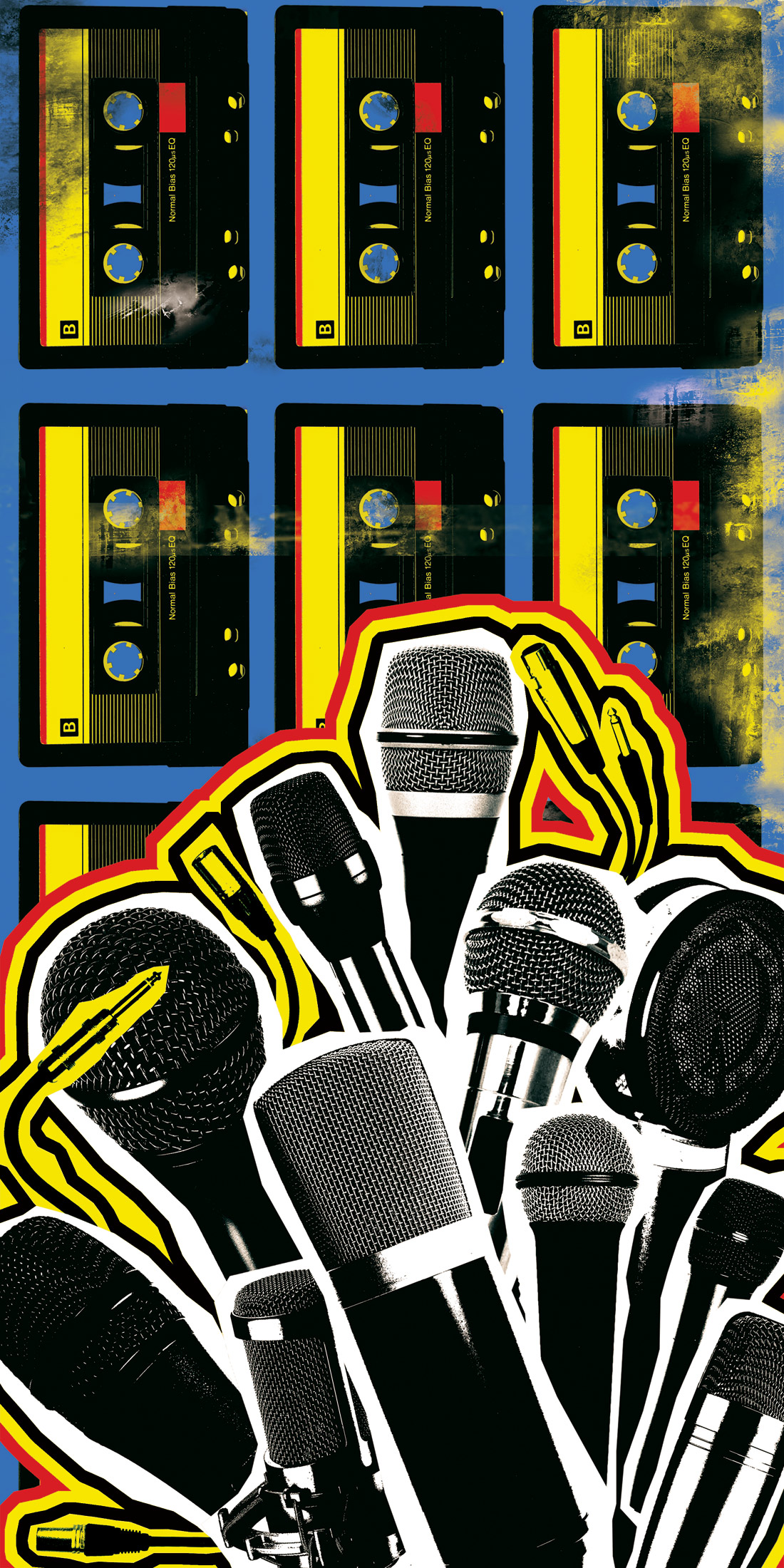This handy item is a USB bus-powered instrument DI with integral headphone monitoring that's about three-quarters the size of an SM57. On one end of the anodized-aluminum housing is a 1/4" jack that's surrounded by an LED-lit plastic endcap; on the other end you'll find a mini-USB plug and a 3.5 mm headphone jack. The whole thing is almost cylindrical, except that it's got a flat "bottom" to prevent it from rolling too easily. On "top" are two rubber knobs for recording level and headphone output level. A high-quality USB cable and a carry pouch are included, as is a belt/strap clip. The charm of this DI is that you can record guitar, bass, or anything with an instrument-level signal straight into your laptop. Zero-latency monitoring is built-in. Unlike the older MicPort Pro (Tape Op #67), which doesn't have a separate control for how much of the zero-latency signal from its mic input is mixed into the headphone output, the AxePort Pro's zero-latency level is controlled by the included driver software. Once installed on Win XP/Vista or Mac OS X 10.4+, a control panel allows you to determine how much "dry" signal (which bypasses all host buffers) is fed back to the headphones. On the Mac, you get a slider to accomplish this task. In Win XP, you have to dig down into the Advanced pane and click on up/down arrows to affect a numeric value-kind of a PITA, but better than no control at all. The "wet" signal is buffered and processed by the host application and any assigned plug-ins (e.g., amp modelers), so you set its level in the host. Within Nuendo/Cubase 4.2 running on my XP-equipped subnotebook, I was able to dial down the latency of the CEntrance ASIO driver's "wet" signal to 5 ms at 44.1 kHz-impressive. That's the equivalent of standing about 5 ft away from your amp (remember, sound takes time to travel through air)-certainly low enough to play guitar through a virtual amp. (I didn't measure the latency on my Mac running Logic Pro, but my guess is that the latency was even lower.) And if that ain't low enough, just dial in some of the zero-latency signal into your headphones. The AxePort Pro supports standard sampling-rates from 44.1 to 96 kHz at 16 and 24-bit resolution. Input impedance is a very high 1M Ohm, so you shouldn't have any problems with most pickups. Sound quality is very high, and the only anomaly I experienced is my early production unit going "microphonic" (like a failing tube) whenever I mixed the "dry" signal into the headphones. Shaking the unit or tapping it resulted in bell-like tones being heard in the headphones, but fortunately, what was recorded was always clean. This problem has been fixed in newer units. By the way, if you plan to use an AxePort Pro alongside a MicPort Pro, keep in mind that zero-latency monitoring (which works in the analog domain) can't work across both devices' inputs at the same time. Therefore, you can't sing and play guitar simultaneously while feeding yourself zero-latency feeds of both mic and guitar; you have to choose one or the other by plugging your headphones into the appropriate interface. For recording instruments directly into your laptop, the AxePort Pro is the easiest to use and most portable solution that I've seen. ($150 street; www.centrance.com)
Tape Op is a bi-monthly magazine devoted to the art of record making.




_disp_horizontal_bw.jpg)